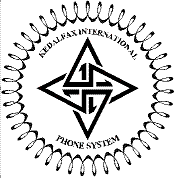Kedalfax Department of Gadgetry
The Department of Gadgetry was formed in November 2006 from a merger of the Departments of Communications and Electrical Standards, and the administration of the Kedalfax International Phone System.
The DoG immediately changed standards for electrical outlets, phone cord connections, computer network connections, and others. On November 12, 2006, one week after its creation, the DoG released the KWire Computer Peripheral Connection Format, which had been a secret project of the DoC since 2001. More information can be found in this section.
The DoG also maintains Kedalfax's national TLD: .ked
Contents
Standardized Connection Types
Electrical connections follow NEMA connector standards for voltage and shape.
Phone and Ethernet connectors are similar to those used in the (RL) United States, though the DoG uses different naming conventions.
The DoG approved use of the HDMI 1.3a standard in mid 2007
KWire
KWire is an external computer peripheral connection type that is similar to USB that offers 6 pins of connection, plus a ground. The format was invented for ease of connections, especially behind computers. It needs less specific rotation than most other formats, thus minimizing difficulty of insertion, especially in hard-to-see areas. The connection speed is similar to that of USB, but has lower loss at high volumes.
There are two types of connectors for KWire: A and B. The A end usually goes in the computer, and the B end usually goes in the peripheral.
KWire A connector:
KWire B connector:
KIPS Telephone Standards
Former KIPS Symbol
The Kedalfax International Phone System (KIPS) was a standardization effort started in 1972 by Kedalfax, Giotizia, Audland, The Sheridan Islands, and Brechenlass. The effort was intended to ease the use of telephone systems for international travelers.
The standard creation was handed over to the DoG after the department's creation. The name now refers to the network of telephone lines in Kedalfax and the other involved nations.
Number Format
Numbers are split into four parts. The first three numbers are the nation code. The next three are the area code. The following three numbers are the exchange. The last four numbers are the number.
This is how a standard KIPS number is written:[xxx](xxx)xxx-xxxx
Dialing Format
If you are dialing a number with the same area code and nation code as the phone from which you are calling, you do not need to dial the area or nation code. If you are dialing a phone in a different area code, but the same nation code, you must press one, dial the area code, and then the rest of the number. To dial a number with a different nation code, you must dial 0, then the nation code, then 1, then the area code, then the rest of the number. If you are dialing a number with a nation code that is not 3 numbers long, you must press #0. An operator will then ask the nation code you wish to call, and direct you on how to finish dialing the number.
To dial a number in another nation within the KIPS, press # and then the last number in the nation's phone code. While it is also possible to use 0+Code, this method is easier and reduces use of the international connections.
Emergency Dialing
When dialing from a phone on the KIPS system, dialing 112 will connect to an emergency services operator closest to you. This operator has the ability to send police, fire, medical, and poison control services to you. Some nations also have additional numbers. The operator can also find where you are, unless you are using an incompatible cell phone. Emergency centers are run by the areas in which they are located.

